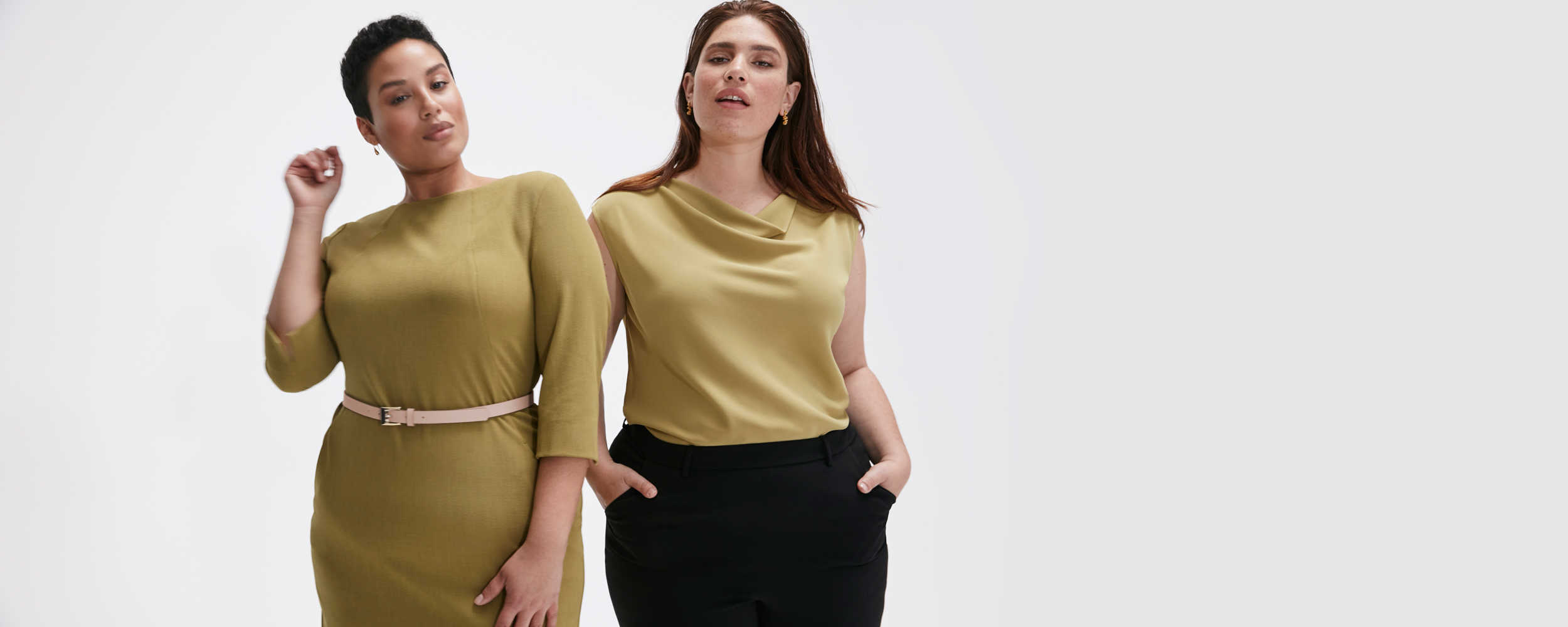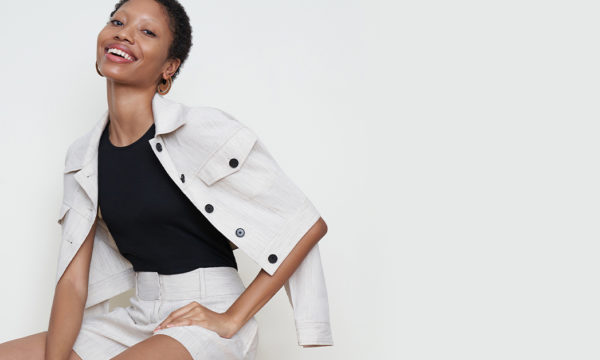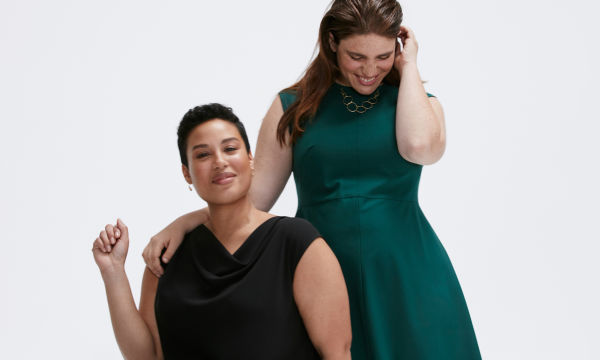How Our Extended Sizes Work
May 22, 2017 | Filed in: Your Closet
As you may have heard, our new extended sizes include women who typically wear sizes 14W to 22W. We’ve always intended to create beautiful workwear for a broad range of shapes, and we’re thrilled to take this step—we hope it’s the first of many ways that we diversify our size offerings.
During the research and development process, we were told that many women felt frustrated by current plus-size industry standards: Sizing was arbitrary, quality was poor, fabrics were flimsy, and silhouettes were sloppily tailored. So we decided to make up our own rules. We created our own sizes (+1, +2, and +3, which roughly correspond to the chart below) and refused to compromise on fit, fabric, or comfort.

To further explain how we determined our sizing (and how it works), we spoke to three women who were instrumental in bringing these pieces to life: Hanna Freedlund, MM’s senior associate of service excellence (yes, that is really her job title); Matilda Ceesay, the technical designer who oversaw development, and Michaella Kurdziel, director of customer experience.
Why did you need to adapt your clothing for these sizes?
Michaella: “Standard clothing sizes—which are also called ‘straight’ or ‘missy’ sizes—don’t account for the fullness of a more curvy body. Even if you try to account for proportional differences, you need to accommodate for different proportional placements.”
Matilda: “The way straight clothing sizes are scaled, it’s like Russian nesting dolls—a little bit bigger with every size. It would be an injustice to the plus customer to keep grading up the same way. She has a different shape and different fit needs. We used our fittings and focus groups to understand exactly what those needs are in order to make sure she feels just as great in our clothes as other customers do.”
Hanna: “At any size, there’s sizing variation between top and bottom, but it’s more extreme with plus sizes. Bodies don’t gain, lose, and carry weight proportionally. We created our new sizes to accommodate the wider variety of fit differences that exist in this area, especially for dresses. There’s more room for curves. There’s more space in the torso and the arms.”
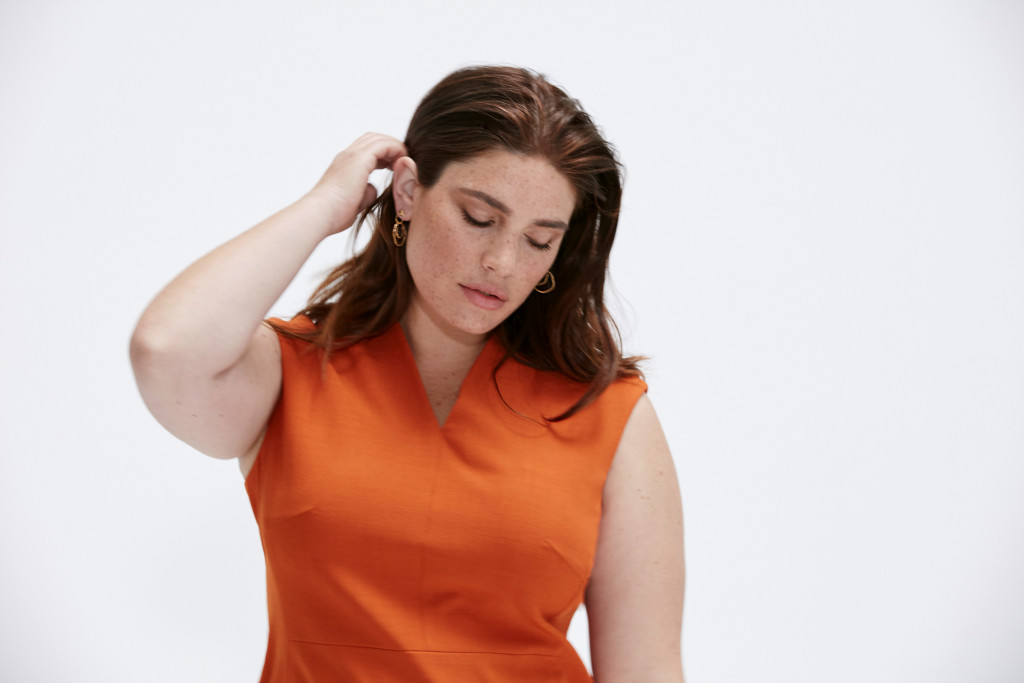
Model Clémentine Desseaux wears the Aditi dress is persimmon with the Oberon earrings.
If a woman wears a size 14 or 16 in MM, when might she try one of the extended sizes?
Hanna: “It depends on her body shape. I can wear a 16 in MM, but some of the +1 pieces are more comfortable for me; in a few styles, I’m a +2. Areas that can be hard to fit are my arms and stomach, which are very specific and tricky to account for in straight sizes. Our plus sizes have a curvier cut, so they’re more accommodating. When it comes to finding your size, trust your stylist—she’ll be able to guide you.”
How did you determine the fit of these pieces, and what was the process like?
Michaella: “It took us over a year to research and produce these additional sizes. We used three different fit models who have roughly the same measurements—and wear about an 18W, or a +2 in our sizing—but their shapes and ages are quite different. Then we took core pieces from our collection, grabbed the size 16, cut it up, and re-built it from scratch to work on different bodies. That meant creating more room in the armhole, but not so much that your bra shows. It meant allowing for a slightly roomier neckline. With pants, is the front rise comfortable? If you sit down, does the hem get too short? For example, there’s more elastic in the back of the Foster pant. The final effect of each piece is the same, and so are the details and the fabric, but the seams are cut and placed differently to maximize comfort and shape. We also brought together numerous focus groups with dozens of women who tried on our pieces and gave feedback.”
Hanna: “We worked very hard to understand how our pieces will look on different body types. We know that things won’t look exactly the same on everybody, but we can make sure that they still look good on as many people as possible.”
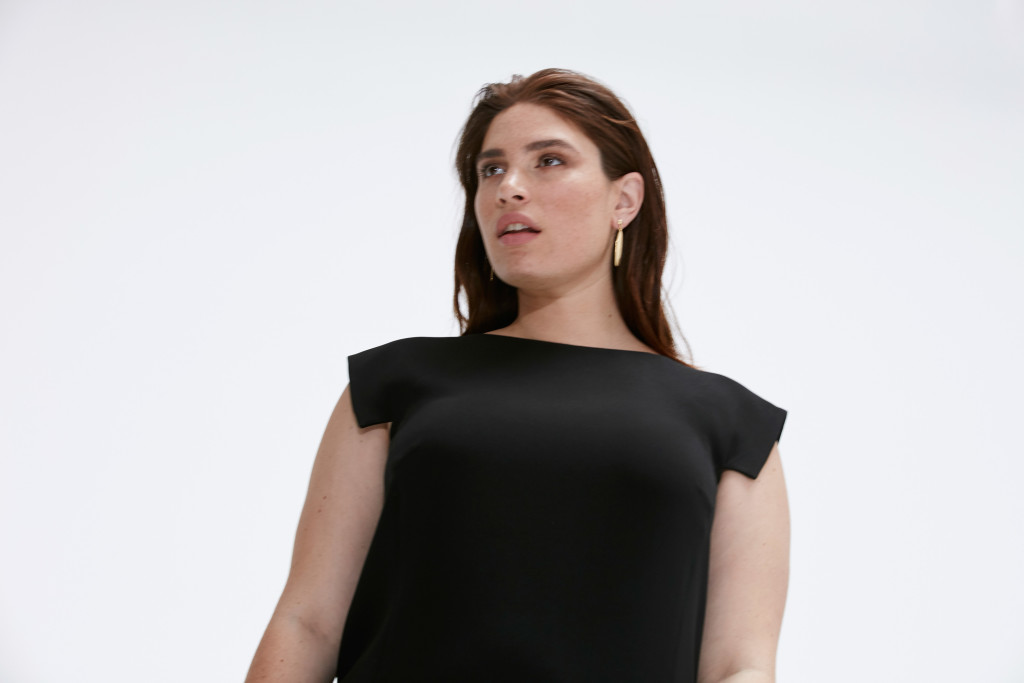
Clémentine wears the Sarah dress in black with the Telesto earrings.
Matilda: “A lot of clothing labels don’t make tailored pieces for plus-size women, because it’s a very technical process, but that’s my role. If you think about a designer—in this case, Miyako—as an architect, I’m like an engineer, or a contractor. It’s my job to look at the proportions of MM’s core styles and figure out how to make them fit perfectly on different body types. Sometimes tiny tweaks can make a big difference. It allows me to be both left-brained and right-brained.”
Will you be adding more?
Michaella: “We’re big believers in testing and iterating, so we wanted to start with a meaningful selection of styles. Now, we plan to do a lot of listening. Tell us what you think! Our goal is to be more like a tech company than a fashion company, in that we can react and iterate on these designs once we get feedback. And yes, we hope to add new styles as soon as possible.”
Shop our plus size pieces here.





